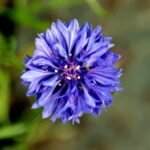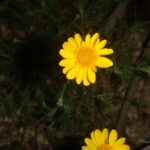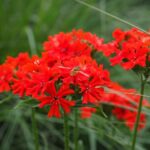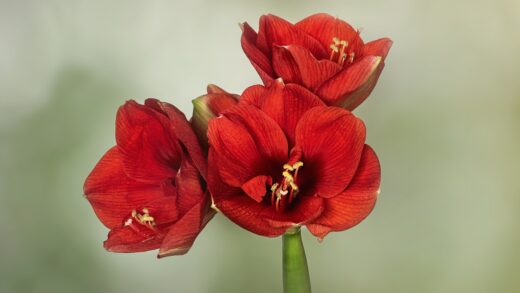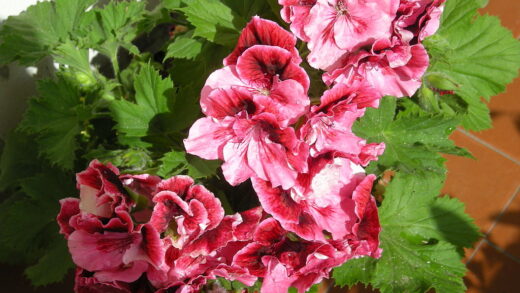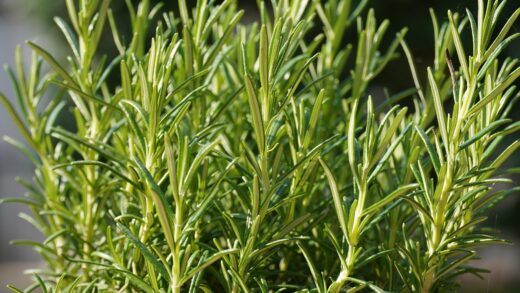The diseases and pests of the dwarf russian almond

While the Dwarf Russian Almond is celebrated for its hardy and generally low-maintenance nature, it is not entirely immune to the challenges posed by various diseases and pests. A vigilant gardener who can recognize the early signs of trouble and understands the appropriate management strategies will be well-equipped to protect the health and beauty of this valuable ornamental shrub. Proactive measures, such as providing optimal growing conditions and practicing good garden sanitation, form the first line of defense. Should problems arise, timely and targeted interventions can prevent minor issues from escalating into significant threats that could compromise the plant’s vigor and its stunning floral display.
The most effective approach to managing pests and diseases is integrated pest management (IPM), which emphasizes prevention and biological controls over chemical interventions. This begins with placing the shrub in a suitable location with full sun and, most importantly, well-drained soil. A healthy, vigorous plant is inherently more resistant to attacks. Ensuring good air circulation by providing adequate spacing between plants and through selective pruning is also crucial, as it creates a less favorable environment for many fungal pathogens that thrive in damp, stagnant conditions.
Regular monitoring is a cornerstone of a successful IPM program. Taking the time to inspect the shrub periodically, paying close attention to the leaves, stems, and flowers, allows for the early detection of any abnormalities. This could include the presence of insects, distorted or discolored leaves, fine webbing, or unusual spots. Early identification is key because it often allows for control using simple, non-chemical methods, such as hand-picking pests or pruning out a small, localized disease infection before it can spread throughout the entire plant.
Good garden hygiene plays a significant, though often underestimated, role in preventing pest and disease problems. This involves promptly removing and disposing of any diseased leaves or branches as they appear. Furthermore, a thorough cleanup of fallen leaves and other debris from around the base of the shrub in the autumn is very important. This material can harbor overwintering pest eggs or fungal spores, which can then re-infect the plant in the following spring. Maintaining a clean garden environment helps to break the life cycle of many common plant afflictions.
Common fungal diseases
One of the most prevalent diseases that can affect the Dwarf Russian Almond is powdery mildew. This fungal disease is easily identified by the characteristic white or grayish, powdery patches that appear on the surfaces of leaves, stems, and sometimes flower buds. While it rarely kills the plant, a severe infection can reduce photosynthesis, cause leaf distortion and discoloration, and detract from the plant’s ornamental value. Powdery mildew thrives in conditions of high humidity and moderate temperatures, particularly when air circulation is poor.
More articles on this topic
Another fungal issue to watch for is leaf spot, which is caused by various fungal pathogens. This disease manifests as small, dark-colored spots or lesions on the foliage. As the disease progresses, these spots may enlarge, and the center can sometimes dry out and fall away, creating a “shot-hole” effect. Severe infections can lead to premature leaf drop, which can weaken the plant over time. Like powdery mildew, leaf spot diseases are favored by wet, humid weather conditions.
Perhaps the most serious disease threat is root rot, which is not a foliar disease but a soil-borne one caused by fungi like Phytophthora. This disease attacks the root system, causing it to decay and lose its ability to absorb water and nutrients. Above-ground symptoms include wilting, yellowing leaves, stunted growth, and branch dieback. The plant may appear to be suffering from drought even when the soil is moist. Root rot is almost always a result of overly wet, waterlogged, and poorly drained soil conditions.
Preventing these fungal diseases is far more effective than trying to cure them. Providing excellent drainage at the time of planting is the best defense against root rot. For foliar diseases like powdery mildew and leaf spot, pruning to thin the canopy and improve air movement is key. Watering at the base of the plant rather than overhead helps to keep the foliage dry. If infections do occur, removing affected leaves and applying a fungicide labeled for the specific disease can help to manage its spread.
Key insect pests
Aphids are among the most common insect pests that may trouble the Dwarf Russian Almond. These small, pear-shaped insects use their piercing-sucking mouthparts to feed on the nutrient-rich sap from new growth, tender stems, and flower buds. Their feeding can cause leaves to curl and become distorted. Aphids also excrete a sticky substance called honeydew, which can lead to the growth of sooty mold and attract ants. Fortunately, aphid populations are often controlled by natural predators like ladybugs, lacewings, and parasitic wasps.
More articles on this topic
Spider mites can also become a problem, especially during hot, dry weather. These are not true insects but are tiny arachnids that are difficult to see without magnification. Their presence is often first detected by the fine, silk-like webbing they produce on the plant. They feed by piercing plant cells and sucking out the contents, which results in a fine stippling or bronzing of the leaves. A severe infestation can cause leaves to turn yellow or brown and drop from the plant, significantly weakening it.
Borers, such as the peach tree borer, can occasionally attack Prunus species, including the Dwarf Russian Almond. The adult is a clear-winged moth, but the damaging stage is the larva, which bores into the trunk of the shrub, typically near the soil line. Their tunneling activity disrupts the flow of water and nutrients within the plant, which can cause wilting, branch dieback, and a general decline in health. The presence of borers is often indicated by gummy, sap-like ooze (gummosis) mixed with sawdust-like frass at the site of entry.
Managing these pests begins with regular inspection. For small aphid infestations, a strong spray of water from a hose can be effective at dislodging them. For more significant aphid or spider mite problems, applications of insecticidal soap or horticultural oil can be used. These products work by smothering the pests and have a lower impact on beneficial insects compared to broad-spectrum insecticides. Preventing borer attacks involves keeping the shrub healthy and avoiding mechanical injuries to the trunk, as stressed or wounded plants are more attractive to these pests.
Disease and pest prevention
The cornerstone of any effective disease and pest management plan is prevention. Creating a growing environment that promotes a strong, healthy plant is the most powerful defense. This starts with proper site selection, ensuring the Dwarf Russian Almond receives at least six hours of direct sunlight per day. Sunlight not only fuels vigorous growth but also helps to dry foliage quickly, making it less hospitable for fungal pathogens. A healthy plant is better able to withstand and recover from minor pest or disease pressure.
Soil health is intrinsically linked to plant health. Planting in well-drained soil is non-negotiable to prevent root rot, the most fatal of potential diseases. Amending heavy clay soils with organic matter like compost improves drainage and aeration. Healthy soil also supports a diverse community of microorganisms, some of which can help to suppress soil-borne pathogens and improve nutrient availability for the plant, further boosting its natural defense mechanisms.
Cultural practices play a vital role in prevention. Pruning is not just for shape and size control; it is also a tool for health. Selectively thinning out branches improves air circulation through the canopy, which is one of the most effective ways to reduce the incidence of fungal diseases like powdery mildew. Furthermore, promptly removing and destroying any branches that show signs of disease or pest damage can stop a problem in its tracks before it spreads.
Watering technique also contributes to prevention. As previously mentioned, watering the soil at the base of the plant, rather than wetting the foliage with overhead sprinklers, is critical. Keeping the leaves as dry as possible significantly reduces the likelihood of fungal spore germination. Combining these preventative strategies—proper siting, healthy soil, and sound cultural practices—creates a multi-layered defense system that greatly reduces the need for chemical treatments.
Treatment options
When preventative measures are not enough and a pest or disease issue requires treatment, it is important to choose the least toxic and most targeted option available. For many common insect pests like aphids and spider mites, insecticidal soaps and horticultural oils are excellent first choices. These products have a low impact on the surrounding environment and beneficial insects because they must directly contact the pest to be effective and they have no residual activity. Thorough coverage, especially on the undersides of leaves, is essential for them to work.
For fungal diseases like powdery mildew and leaf spot, there are several fungicidal treatments available. Products containing sulfur or copper can be effective, but they must be applied preventatively or at the very first sign of disease. Neem oil is another valuable tool in the organic gardener’s arsenal, as it has both fungicidal and insecticidal properties. It can help to control powdery mildew and also acts as a repellent and growth disruptor for a variety of insect pests.
In the case of bacterial diseases, which can sometimes cause symptoms similar to fungal leaf spots, control is more difficult as there are fewer effective treatments available to home gardeners. Copper-based fungicides can have some bactericidal properties and may help to limit the spread. Again, prevention through good sanitation and avoiding overhead watering is the most effective strategy. Any branches showing signs of bacterial infection, such as cankers or oozing, should be promptly pruned out well below the affected area.
For severe or persistent pest and disease problems, it may be necessary to resort to stronger, synthetic pesticides or fungicides. If this course of action is taken, it is crucial to read and follow the product label instructions precisely, including application rates, timing, and safety precautions. It is also important to correctly identify the pest or disease to ensure the chosen product will be effective. Using broad-spectrum chemicals should always be a last resort, as they can harm beneficial insects and disrupt the natural balance of the garden ecosystem.
📷 Le.Loup.Gris, CC BY-SA 3.0, via Wikimedia Commons








